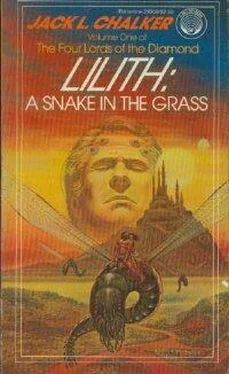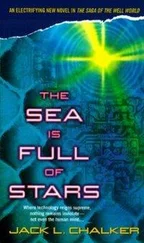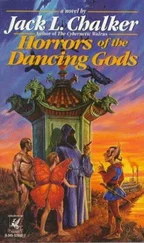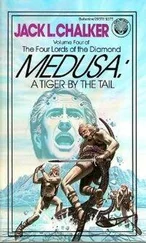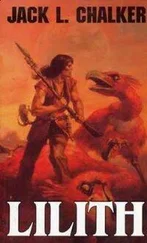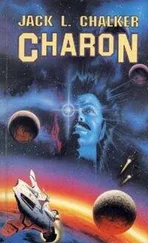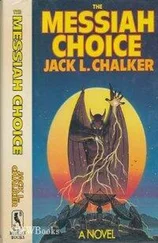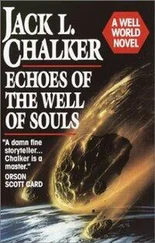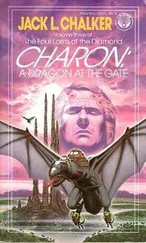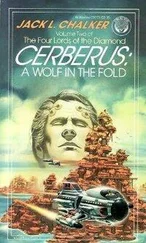And then came the details, confirming their worst fears. He followed form, though, closest in to farthest out from the sun.
“Charon,” came the first report. “Looks like Hell.
“Lilith,” he continued. “Anything that pretty’s got to have a snake in it.
“Cerberus,” he named the third. “Looks like a real dog.”
And finally, “Medusa: Anybody who lives here would have to have rocks in his head.”
The coordinates followed, along with a code confirming that Warden had done remote, not direct, exploration—that is, he hadn’t landed, something that was always his option—and a final code, “ZZ,” which filled the Confederacy with apprehension. It meant that there was something very odd about the place, so approach with extreme caution.
Cursing Crazy Warden for giving them nothing at all to go on, they mounted the standard maximum-caution expedition—a full-scale scientific expedition, with two hundred of the best, most experienced Exploiter Team members aboard, backed up by four heavy cruisers armed to the teeth.
The big trouble with Warden’s descriptions was that they were almost always right—only you never figured out quite what he meant until you got there. Appearing out of hyperspace, the follow-up party gazed upon a.strange sight—a hot, F-type star, with a huge solar system containing ringed gas giants, huge asteroids, and numerous solid planets. But in the midst of it, close to the sun, were four worlds with abundant oxygen, nitrogen, and water, four jewels that screamed “life.” Although the four planets were in far different orbits—from a little more than 158 million kilometers from their sun to 308 million kilometers out—when the party first encountered them, they were in a rare configuration. For a brief period, the four were at almost exact right angles to one another. Although that configuration was a fluke and, rarely observed since, the system’s four worlds became known as the Warden Diamond. And diamonds they were despite the orbital coincidence at then” discovery —sparkling gems with potential untold riches.
Still, even some of the most materialistic among the observers took the diamond configuration as some sort of omen, just as Warden himself might have. And so, like Warden, they didn’t land immediately. They poked and they probed and they analyzed, but found nothing at all suspicious. There was no evidence of supernatural meddlings here, despite the incredible impossibility of four worlds so closely matched to permit life. So they laughed at themselves for their foolishness, their superstition, their sudden infusion with primitive fears they all believed themselves well beyond, and they relaxed a little. Some suspected that the Warden Diamond was the result of some ancient civilization terraforming to suit—but if it was, there ;Was no sign of that now.
They moved cautiously in on the planets. Charon was hot and steamy, closest of the four to the sun. It rained much of the time there, and the small, nasty dinosaur-like saurians that lived there seemed formidable, perhaps even dangerous—but not unmanageable. There might be more dangerous stuff in the seas that covered much of the world, but only a permanent expedition could find that out. In the meantime, this jungle world, with an axial tilt of under 6 degrees, had a temperature range of from roughly 28 to 60 degrees centigrade. Thanks to the land distribution it was habitable and usable—but not inviting.
Charon did indeed look like Hell.
Next out was Lilith, almost a textbook perfect world. Slightly smaller than Charon, it was roughly 70 percent water but far more temperate and far gentler in its landscape. Mountains were low, and there were broad plains and swamps. A nice variety of landforms without serious extremes or violence, and an axial tilt of 84 degrees—almost a world on its side, which meant little seasonal variation. It was very hot all over, with days of 40 degrees centigrade or more, with 20 to 25 considered absolutely frigid.
Its jungle like forests were the most verdant green, and though the foliage was alien, it wasn’t all that alien, bearing large amounts of fruits and other products that proved edible by humans. The dominant animal life was apparently exclusively insects, from giant behemoths down to tiny creatures smaller than the head of a pin. It was the kind of world Confederacy terraformers aimed for and rarely achieved artificially; now, here it was, apparently natural, the beautiful Eden like paradise of Lilith. And not a snake in sight—yet.
Cerberus was harsher. Its 25-degree axial tilt gave it extreme seasonal variations, that ranged from its frozen polar caps to a hot 40-degree Centigrade at the equator. The oddest thing about Cerberus was its land surface, which appeared almost covered with enormous varicolored forests. It took the actual landing to discover that Cerberus in fact had no land area at all, but was almost covered by enormous plants growing up from the ocean bottom, some many kilometers, so tremendously dense in many places that they formed an almost solid surface. On the tops of these great waterlogged forests whole new varieties of plants grew, forming a unique botanical ecosystem. The visible wildlife seemed to be birdlike in appearance, although there were some insects as well, but animal life was sparse on Cerberus, it seemed—unless it lay beneath the omnipresent waters of the surface. Still, so dense and enormous were the plants of this water world that men could live there, perhaps even build cities in the trees—an alien but not impossible world. With no apparent natural resources beyond wood and no way to bring in a truly modern lifestyle, settlement there would be precarious. Inhabitable, yes, but from the standpoint of modern man it was something of a dog.
Last and least pleasant of all was Medusa, a planet with frozen seas, blinding snow, and jagged, towering peaks. Its 19-degree axial tilt gave it seasons, all right, but it was a bad to worse situation, with summer in the tropics averaging 20 degrees centigrade or less and going to the impossibly cold polar regions. Although in heavy glaciation, it was the only one of the four Warden worlds with signs of volcanic activity. There were some forests, but mostly tundra and grasslands, although it had what appeared to be mainmalian life in the form of herds of odd grazing animals and some very fierce and nasty carnivores. It was a harsh, brutal world that could be tamed and lived on; still, the Exploiter Team had to agree with Warden—to want to go and live there, you’d have to have rocks in your head.
Four worlds, from a steaming hell to frozen tundra. Four worlds with temperature extremes that could be borne and air and water that could be used. It was incredible, fantastic—and true. And so the Exploiter Team went in, set up its main base just off a tropical lagoon out of the most romantic travel poster—on Lilith, of course. Smaller expeditions went from there to the other three worlds for preliminary testing, poking, and probing.
Warden had been right about three of them, but his suspicion of Lilith seemed to be just the natural suspicion of somebody who sees something too good to be true. Or perhaps it was some sixth sense, developed from so many years in isolation and poking and probing into so many alien systems. Perhaps it was…
Once down, the Exploiter Teams were in effective quarantine from the military and from all commerce with the Confederacy. The initial exploration would take at least a year, during which they would be both scientists and guinea pigs, poking and probing one another as much as they poked and probed each planet. They had shuttlecraft capable of traveling between the planets if necessary and ground and air transportation to carry on their own work, but nothing interstellar. The risk was too great. Man had been burned too many times before to take such chances.
Читать дальше
